
Bolshaya Konyushennaya Street is one of the most important streets in the historical center of St. Petersburg.
The length of Bolshaya Konyushennaya Street is about 600 meters. It runs parallel to Malaya Konyushennaya Street and the Moika River, and stretches from Konyushennaya Square to Nevsky Prospekt - one of the most visited and beautiful streets of the city.

During the history of the street was named:
- from August 20, 1739-Bolshaya Konyushennaya Street, since the court stables were located nearby. Also, the street was called simply Stables or Police-after the nearby police department.;
- since October 1918-Zhelyabova Street - in honor of the revolutionary and populist terrorist Andrei Ivanovich Zhelyabov, who took part in the murder of Emperor Alexander II. In honor of the deceased emperor and on the site of his fatal injury in St. Petersburg (near Bolshaya Konyushennaya Street), a temple was erected, which still exists today - Saved on Blood;
- since October 4, 1991 - Bolshaya Konyushennaya Street (the historical name was returned).
The street was formed in the 1730s according to the plan developed by the Commission on the St. Petersburg Structure, created by the Empress Anna Ioannovna. The laying of the street was included in the general plan for the construction of the Court Stables (Stable Yard), erected in 1720-1723 near the current Stable Square.
Originally, the street was built up with wooden houses belonging to Europeans who came to St. Petersburg. The houses were mostly occupied by trade shops and craft workshops. After the Commission on the St. Petersburg structure decided that the close wooden buildings could cause a severe fire, and in 1739 a decree was issued on the demolition of wooden houses and the construction of one - and two-story stone buildings in their place.
The area around the street was populated by representatives of non-Orthodox communities, as a result of which a German church, a Finnish church, a Dutch reformed church and an Orthodox Stable church were built on the square of the same name. Thus, the area around Bolshaya Konyushennaya Street became multinational, and the highway itself became a "street of religious tolerance".
Today Bolshaya Konyushennaya Street is one of the famous streets in the center of St. Petersburg and is part of the golden triangle of the city. Along the street there are historical buildings, a church, the famous Pyshechnaya and a theater, as well as shops and boutiques, restaurants and accommodation facilities (hotels apartments)
The street is a roadway, with pedestrian sidewalks on both sides. The roadway of the street is paved with paving stones.
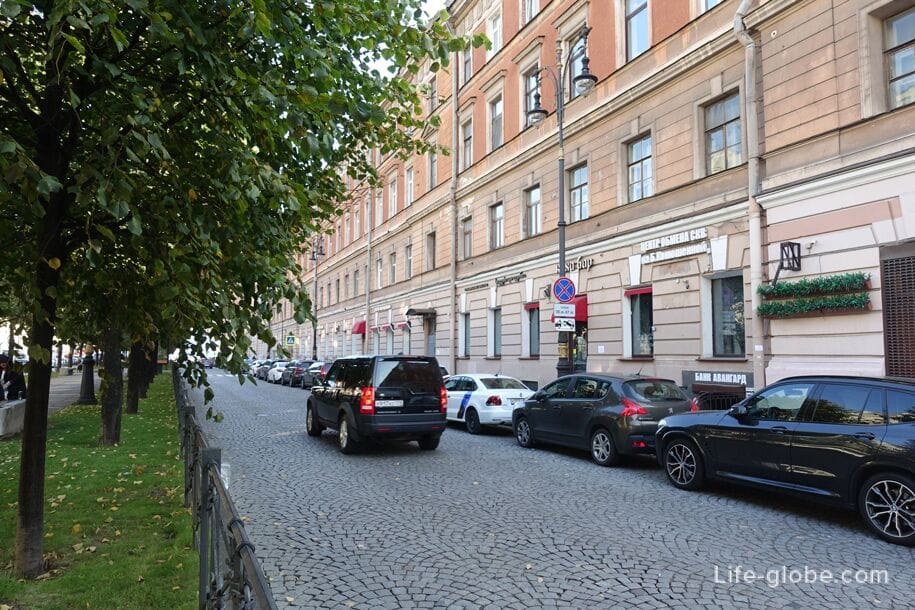
The center of the street forms a boulevard, along which trees are planted, benches, lanterns and urns are installed.
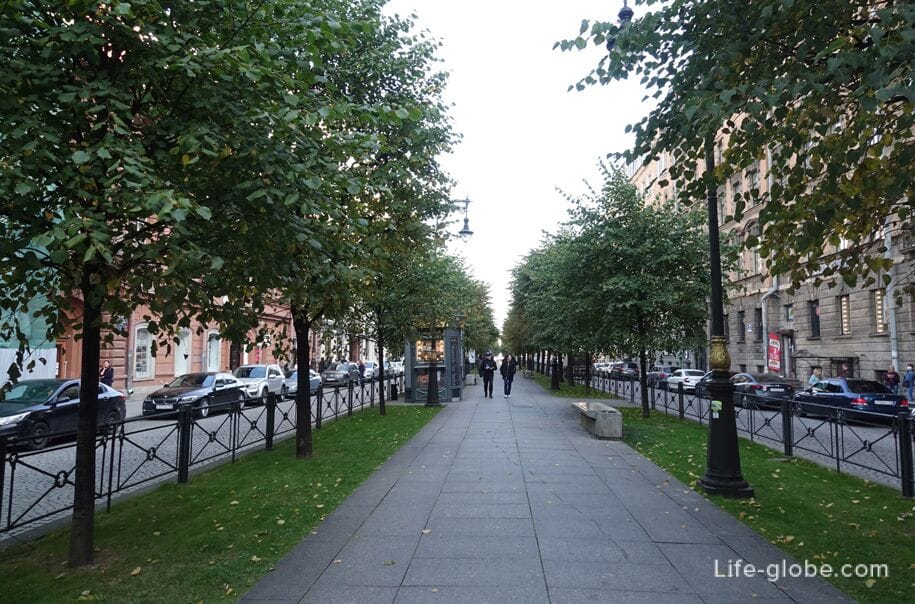
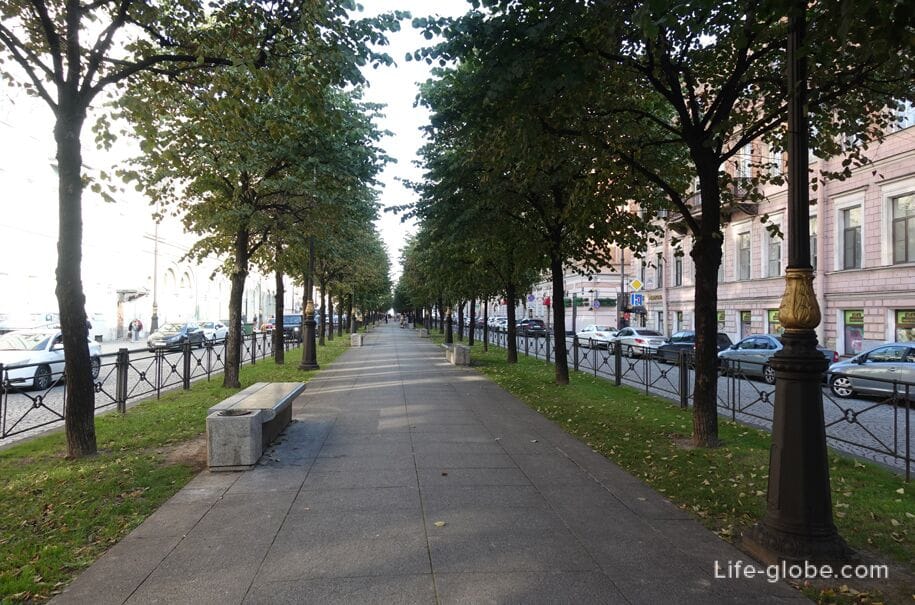
In October 2011 , three fountains with sculptures of horses made by the sculptor Vasily Nikolaevich Azemsham were installed on the boulevard of Bolshaya Konyushennaya Street.
Two sculptures are located at the intersection of Bolshaya Konyushennaya Street and Volynsky Lane.

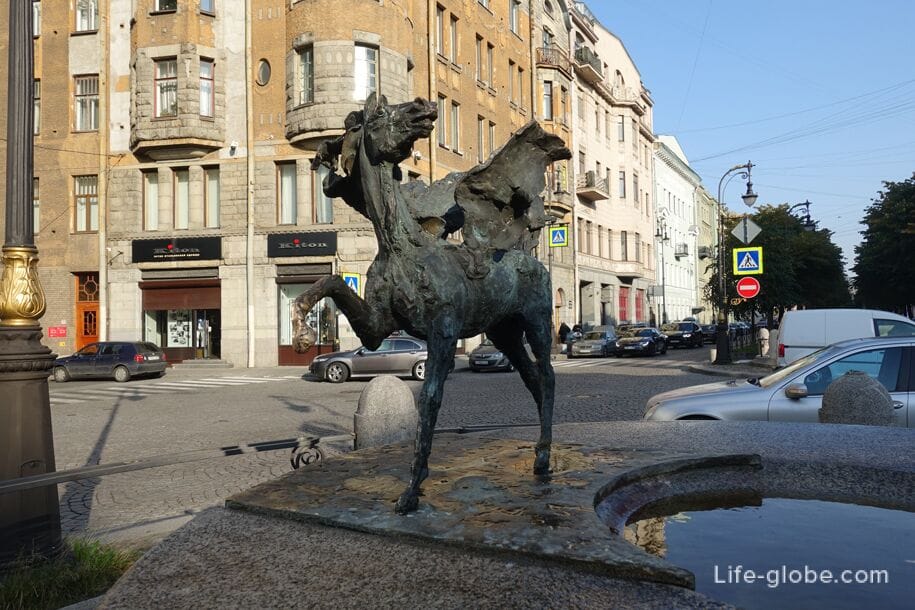

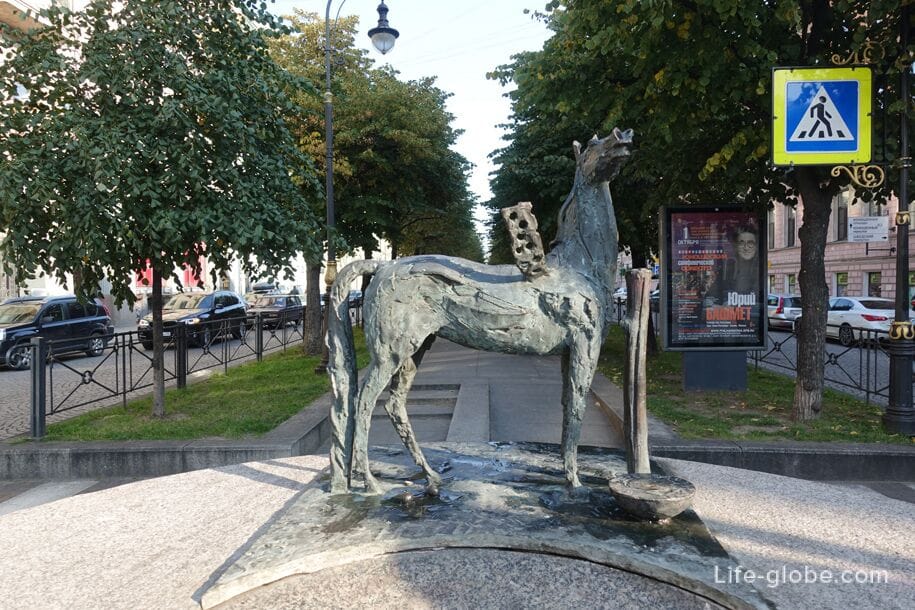
Another sculpture is located at the very beginning of Bolshaya Konyushennaya Street - at Konyushennaya Square.
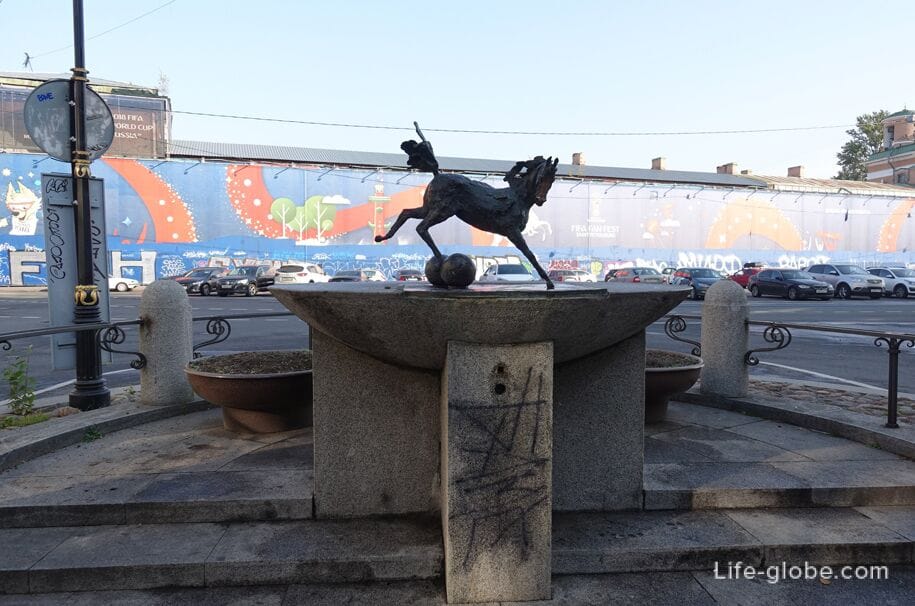
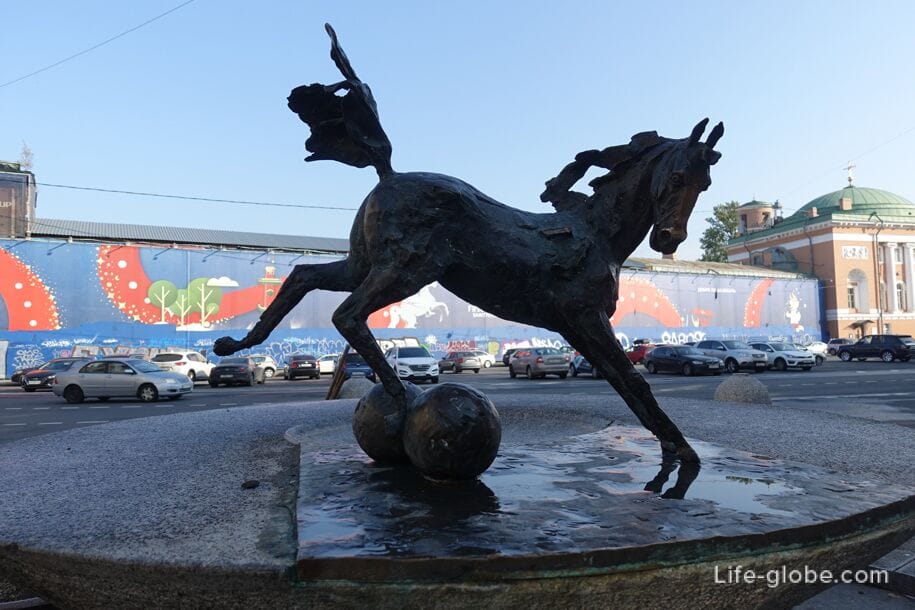

The house at number 1 on Bolshaya Konyushennaya Street with a rounded facade, also facing Konyushennaya Square, is designed in the form of eclecticism.
During the history of the building was the property of the family Zhadimirovskih.
The existing house was built in 1849 by the architect N. P. Grebenka. The first floor was adapted to accommodate shops.
In the second half of the 19th century, the territory was owned by the Ushakovs. Apartments in the house were rented out, and some of the premises were used for commerce.
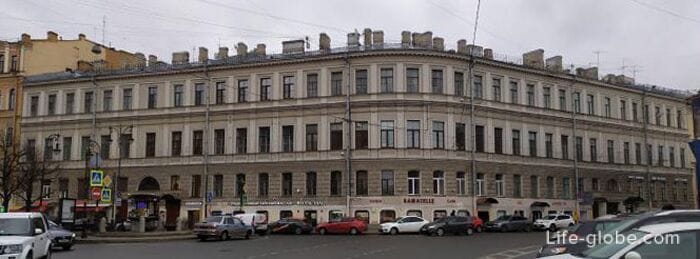
The building at number 2 is the largest on Bolshaya Konyushennaya Street.
On the site of the current building in the 18th century there were residential buildings that belonged to the Stable Department. In the 1800s, the houses were combined by the architect L. Ruska into a single two-story structure.
In the 1840s, the building was remodeled by the architect A. I. Bourgeois.
The building acquired its modern appearance in 1899-1900, when it was built on two more floors and redesigned according to the project of the architect V. M. Lopatin.
Previously, the house of the Stable Yard was occupied by ordinary employees and officials responsible for the court hunt and the imperial orchestra.

The house at number 3 in the middle of the 19th century was a three-story building in the classical style and belonged to the family of the official Chelishchev.
Later, the site was owned by State councilor P. A. Myasoedov. For him, in 1876, the house was completely rebuilt by the engineer A. L. Strauch. The building acquired eclectic features, became a four-story building with a central bay window.
Subsequently, the building underwent reconstruction, until, in 1978, according to the project of architects A. G. Rumyantsev and L. M. Denisenko, it acquired the fifth floor, which was built from the attic.
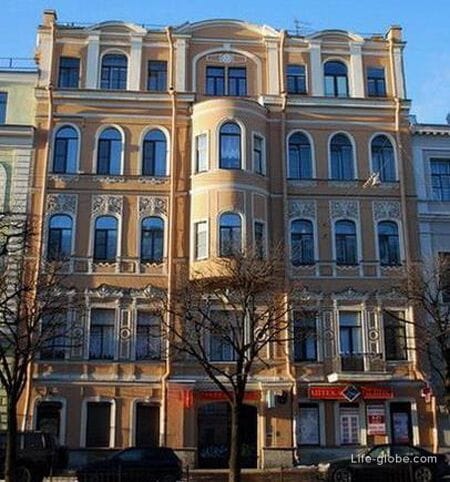
The corner house, located at 4 Bolshaya Konyushennaya Street / Swedish Lane, was built in 1755.
In 1847-1848, the building was enlarged to four floors by the architect G. A. Bosse.
Subsequently, major repairs were carried out. The building has a classicist style.
One of the owners of the house number 5 was Quartermaster General I. P. Pushchin. His son Ivan Pushchin spent his childhood in the house.
After Ivan Pushchin was arrested on December 14, 1825, and then sentenced to eternal hard labor, the house was owned by his younger brother, Mikhail, who began the reconstruction of the estate. For him, the architect B. B. Heydenreich drew up a project for a three-story building, which was built under the direction of F. I. Rusk.
In 1898, the house was added to the fourth floor.
Subsequently, the owners of the house changed, the premises were rented out. The building has been restored. Made in the eclectic style.
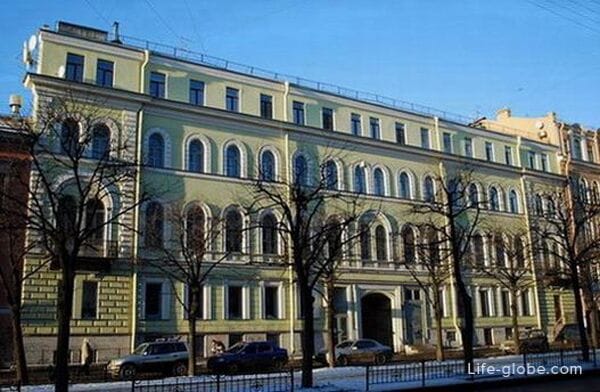
Under numbers 6 and 8 are the residential buildings of the Finnish Evangelical Church.
The site has been owned by the Finnish-Swedish community since the 1730s. After the division of the community, the site was transferred to the Finns.
Two residential buildings were built in 1842-1844 by the architect G. E. Bosse. The houses were inhabited by priests and ministers of the Finnish Church. Some of the rooms were rented out.
In the middle of the 19th century, a free clinic of N. F. Edelberg worked in one of the houses.
The buildings are designed in the classical style.
Between the houses at numbers 6 and 8, at the address: 8a Bolshaya Konyushennaya Street, is the Church of St. Mary, which originally also belonged to the Finnish-Swedish community, and then to the Finns.
The stone church on the site of the former wooden bala was built in 1803 by the German-born architect Gottlieb Christian Paulsen.
Subsequently, the building was reconstructed.
In September 2002, St. Mary's became an episcopal church, which corresponds to the cathedral - St. Mary's Cathedral.
Today, St. Mary's Church (Finnish: Pyhän Marian kirkko) is the cathedral of the Evangelical Lutheran Church of Ingria in Russia.
The main facade of the church, facing Bolshaya Konyushennaya Street, is distinguished by a portico of four columns of the Tuscan order with capitals and is completed by a triangular pediment.
The church is crowned with a dome with a cross. The facade has three doors and two niches on the first floor level, four windows on the second floor level and is decorated with pilasters with capitals. More about St. Mary's Church…


The house at number 7 was first built in the 18th century and had two floors.
From the end of the 18th to the middle of the 19th centuries, the building was owned by the merchant Zhadimirovsky and his heirs, then by the Demidov family.
In 1823, the mansion was rebuilt according to the project of the architect I. G. Gomzin: the third floor was added, and the building received the features of classicism.
The last private owner of the site was S. M. Demidova (married Olsufyeva, then Volkonskaya), under whom private owners and organizations worked in the building.
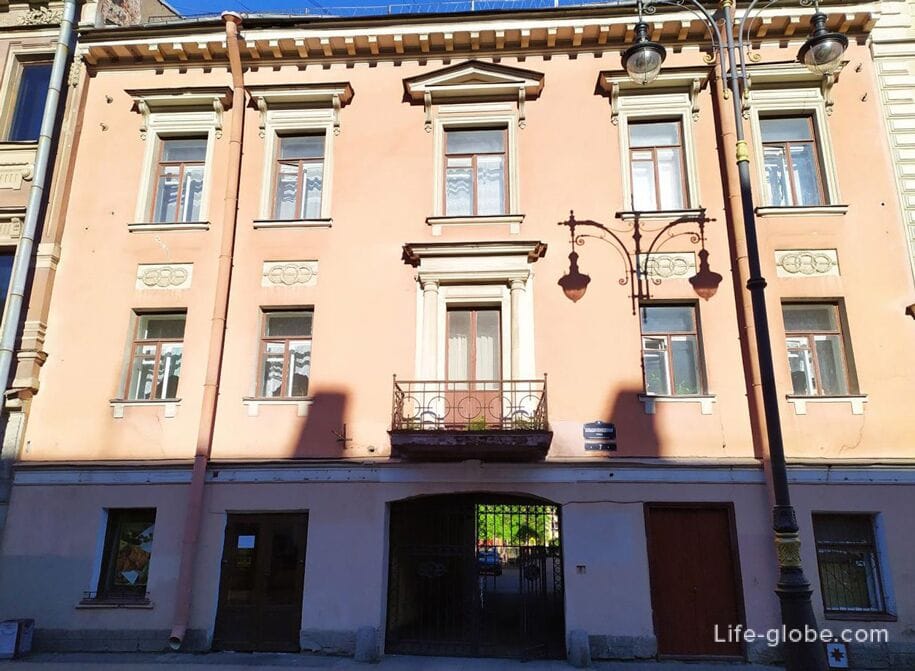
The house at number 9 is an example of early Art Nouveau.
In the first half of the 19th century, the owners of the house were the Smirnovs, who were visited by A. S. Pushkin.
Later, the house was owned by T. E. Silvanskaya, and after that by the Guards officer V. A. Sleptsov. For the two owners, according to the project of the architect L. L. Fufaevsky, the house was rebuilt: the third floor was added, the main staircase was arranged, the lower floor became wide showcases, the facade was redesigned in the Art Nouveau style.
Today, the building has large storefront windows on the ground floor. The facade is decorated with plant elements and stucco patterns.
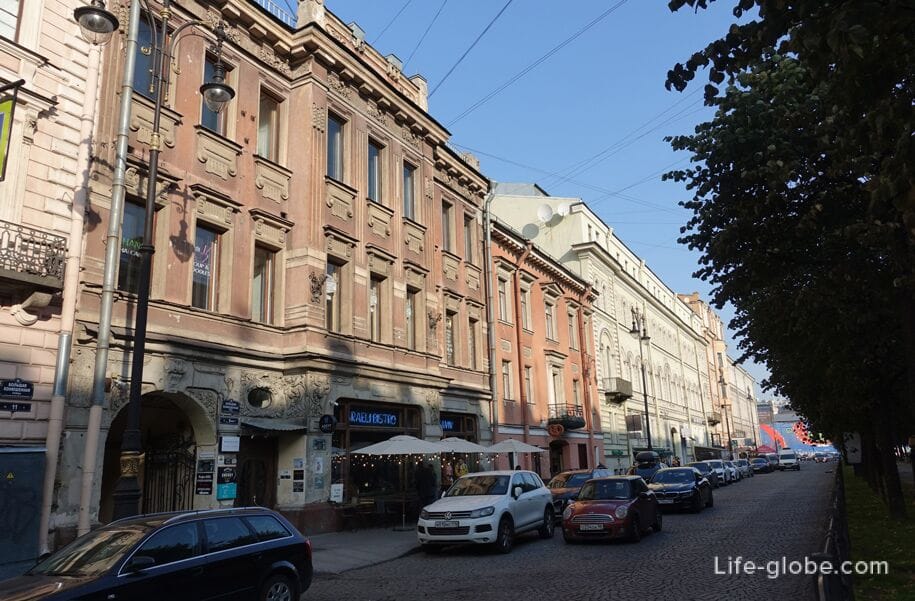
The buildings at numbers 10, 12 and 14, designed in the eclectic and classicist style, belonged to the German Lutheran Church of St. Peter and Paul.
The houses were built, as well as the nearby Lutheran church of Saints Peter and Paul (Peterskirche, German: Petrikirche), when this land plot was allocated to the German Lutheran community in 1727 by Peter II.
Known dates of construction of houses: from 1830 to 1860.
Subsequently, the houses were built and restored.
The building at number 14 is a corner building and has a second address: 22 Nevsky Prospekt. The building has a Russian-German meeting Center at the Peterskirche. Learn more about Peterskirche…
View of the corner building on Bolshaya Konyushennaya Street and Nevsky Prospekt

From Bolshaya Konyushennaya Street 11 towards the Moika River embankment, a chain of courtyards leads to the State Academic Chapel and forms a pedestrian zone called "The Courtyards of the Chapel".
The State Academic Chapel of St. Petersburg is the oldest Russian professional musical institution, which has determined the formation and development of the entire Russian professional musical culture.
The chapel consists of a complex of buildings. At the back of the courtyard is the Chapel concert Hall, built in 1889 by Leontius Benoit during the major reconstruction of the Chapel buildings.
In the chapel hall there is an organ of the German company Walcker, transferred from the Dutch Reformed Church, located on Bolshaya Konyushennaya Street and Nevsky Prospekt. The facade of the organ is the oldest preserved in Russia and is considered a monument of decorative and applied art.
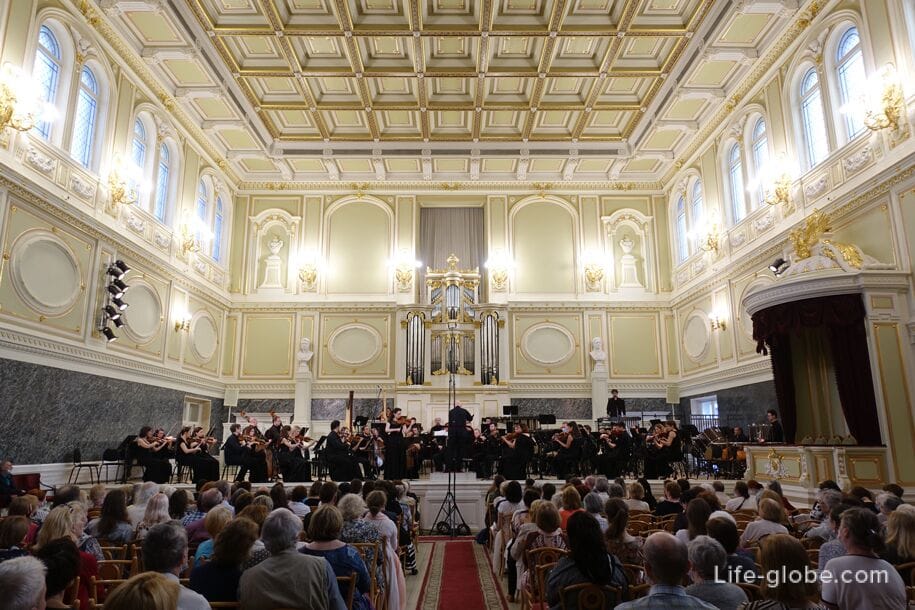
The facade of the Chapel house, designed in the eclectic style, opens onto 11 Bolshaya Konyushennaya Street.
Website of the State Academic Chapel: capella-spb. Read more about the Capella...

At number 13 is the apartment house of F. K. Weber, which appeared on the street in 1852-1853, designed by the Academician of architecture K. G. Alstrem for the Swiss bakery master F. K. Weber.
From November 1858 to April 1860, I. S. Turgenev lived in the house. On the facade of the house there is a memorial plaque dedicated to Turgenev's life in the house.
At the turn of the 19th and 20th centuries, the premises in the house on Bolshaya Konyushennaya Street were occupied by several shops. Today, the building houses luxury shops and boutiques.
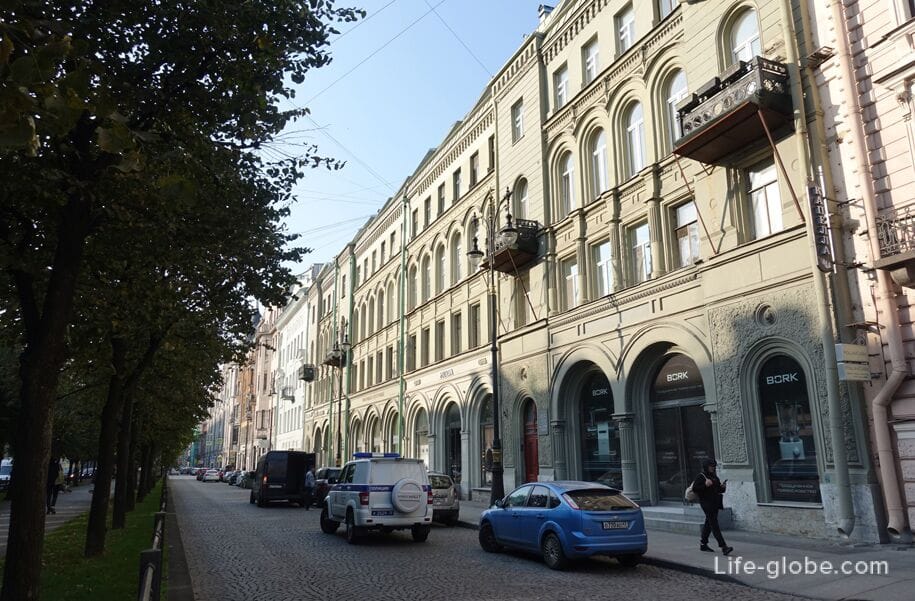
The house at number 15 was one of the first large four-story buildings on Bolshaya Konyushennaya Street. The building was built in 1838-1839 according to the project of I. M. Mayevsky and K. I. Reimers for the collegiate adviser I. A. Kashansky.
From September 20, 1849, a young N. G. Chernyshevsky lived in the house for five months in the apartment of his cousin L. N. Tersinskaya.
In 1912, the building was rebuilt under the direction of engineer S. E. Zakharin: a frieze with decorative molding was built over the fourth floor, and the center of the facade is marked with the coat of arms of the then landlord - nobleman A. M. Somov. Somov opened various children's institutions in the house: art courses, a school, a kindergarten, a library, a reading room of M. G. Genkel and published the magazine "Childhood".
From 1927 until his death on November 29, 1940, the architect N. A. Trotsky lived in one of the three-room apartments of the house.
The building has a neoclassical style, and the facade has sculptural decorations.
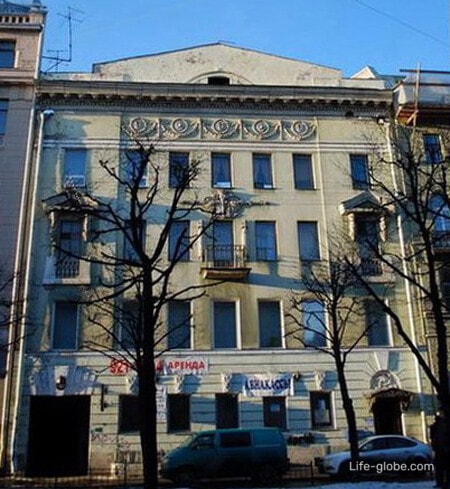
The building at number 17 was built in 1841 by the architect G. E. Bosse. Until the beginning of the 20th century, the house was owned by the noble Korsakov family.
In 1910-1911, the architect M. A. Songailo rebuilt the building for the notary Ya. F. Sakhar: two floors were added, the facade was given the forms of neoclassicism with elements of Art Nouveau. The ground floor of the house is faced with granite. The lobby of the grand staircase is decorated with a frieze on the theme of the battle of the Amazons.
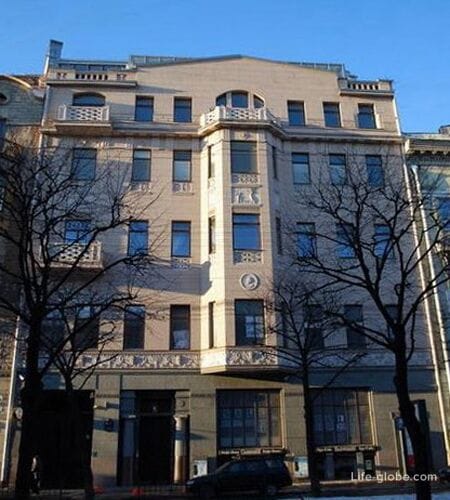
The corner house, located on Bolshaya Konyushennaya Street 19 and Volynsky Lane 8, is designed in the Art Nouveau style and stands out with a corner semicircular bay window with a crowning tower with a two-tier helmet-shaped dome.
A furniture workshop "F. Melzer and K" worked in the building. When the workshop moved to premises on the Karpovka embankment, the site was occupied in the 1880s by the firm's workshops and the shop of artistic bronze "N. Shtange" - the supplier of the imperial court. It was headed by A.A. Melzer.
The house, as a new income, was built in 1904-1905 according to the project of F. I. Lidval. The customer was the widow of the hereditary honorary citizen M. N. Meltzer, from whom the site went to the engineer N. A. Meltzer.

The corner building at numbers 21-23 on Bolshaya Konyushennaya Street and Volynsky Lane 3, is designed in the Art Nouveau style.
The building was built on a plot owned by A. P. Volynsky in 1908-1909 by the architect Ernest Frantsevich Wirrich for the Guards Economic Society. The small hall was added in 1912-1913 by Ivan Leonardovich Balbashevsky. The new premises were joined by a single facade to the existing building.
In Soviet times, the building housed the department store "House of Leningrad Trade" (DLT).
The building is made of brick-monolithic technology. Shops and boutiques are located in the premises of the building. The trading hall has the appearance of an atrium. The building is distinguished by a dome with a spire.
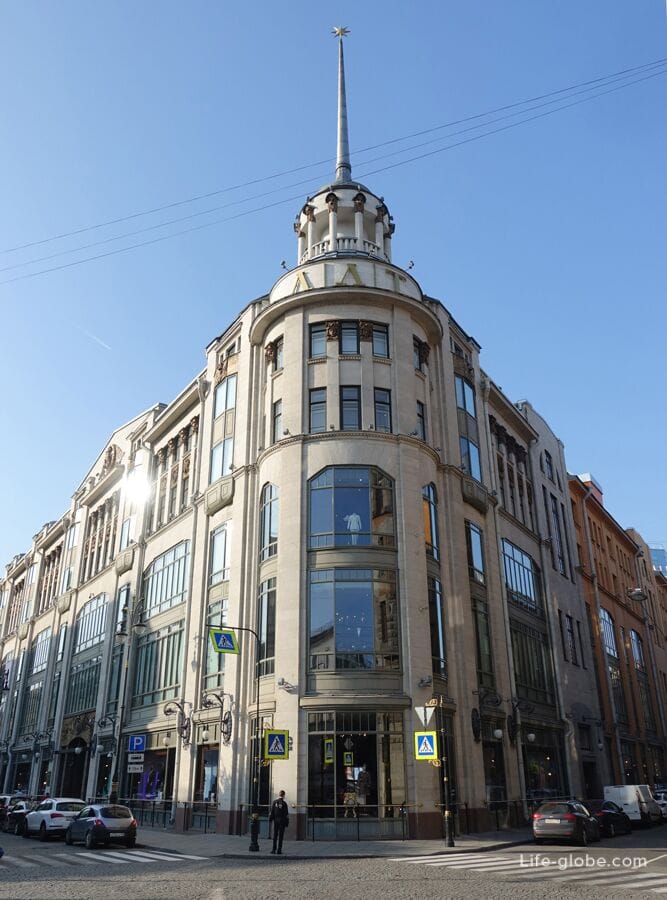
The building at number 25 was built in 1770-1772 by the architect Yu.M. Felten. It was the stone French-German Reformed Church of St. Paul.
In 1839-1840, the building was rebuilt and expanded by the architect A. Bosse. In the second half of the 19th century, the church became only French.
In 1858, the exterior of the building was changed according to the project of the architect Yu. O. Dyutel: the facade was decorated in the Renaissance style.
Today, in the former house of the church, including the famous Pyshechnaya, known since the Soviet era as Pyshechnaya "Zhelyabova 25", works. Pyshechnaya is included in the Red Book of Memorable Places of St. Petersburg, and changing the profile is prohibited. They say that over the past 50 years in Pyshechnaya, neither the assortment nor the recipes for the preparation of the main two products have changed: coffee and crumpets. Read more about Pyshechnaya with photos...
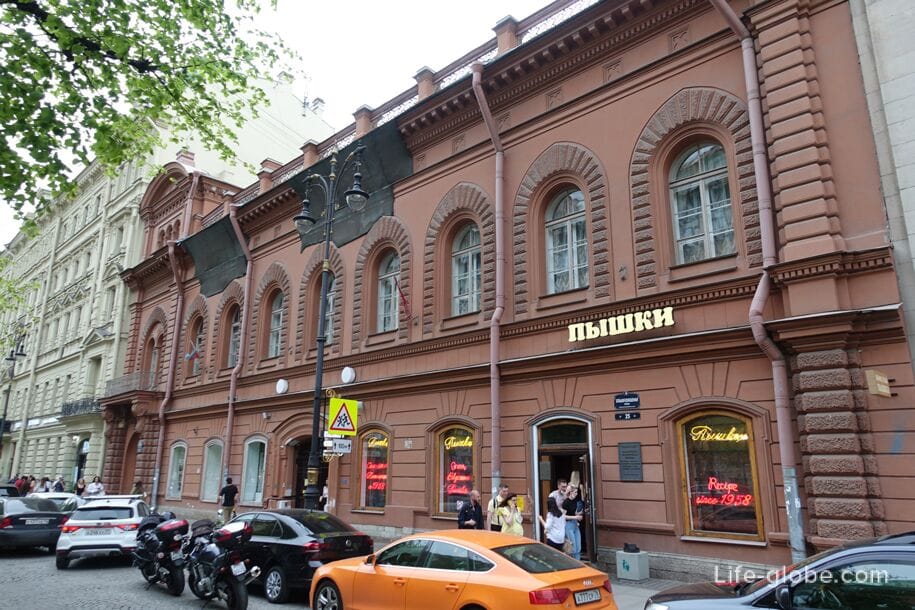
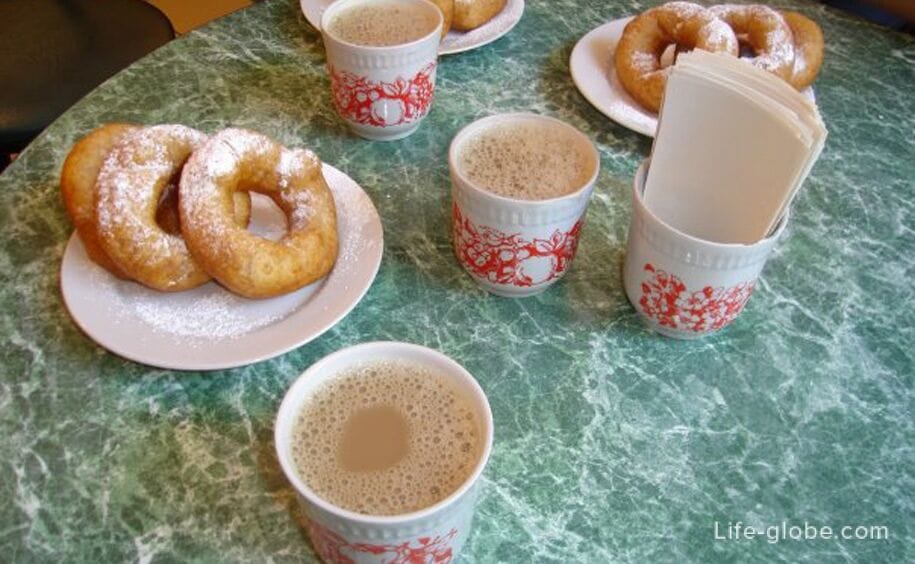
The elegant building at number 27 in the eclectic style is one of the most beautiful on Bolshaya Konyushennaya Street.
In the 19th century, the building was the hotel "Demutov Tavern", whose guests were Pushkin, Griboyedov, Batyushkov, Chaadaev and Turgenev. By the beginning of the 20th century, the building was occupied by a fashionable restaurant "Bear". In the 1930s, the former restaurant was converted into a theater.
Today, the building also houses the Arkady Raikin Variety Theater , the first state professional variety theater in the USSR, opened in 1939.

At number 29 there is a house on the site of which the buildings of the Main Police Office were previously located, which was responsible not only for order and security, but also for urban development. The architects of the chancery may have built the first buildings on the site.
Then the court hospital was located on the site.
In 1868-1869, by order of the State Councilor S. D. Bashmakov, the buildings on Bolshaya Konyushennaya Street were re-built. Bashmakov's house became the first five-storey house on Bolshaya Konyushennaya Street, its project belongs to D. I. Grimm.
In the 1870s, the site was purchased by industrialist and engineer Ludwig Nobel. After Ludwig's death, the house was owned by his wife, Edla Collin Nobel.
Subsequently, the owners and tenants of the building changed. Today, the house houses commercial and residential premises.

At the corner of 31 Bolshaya Konyushennaya Street and 20 Nevsky Prospekt, there is a building that occupies an entire block – a former church of the Dutch Reformed Church.
The church building was built in 1831-1835 by the French-born architect Paul Jacot in the style of Russian classicism on the site of a house owned by the Dutchman Pierre Puzy.
After the revolution of 1917, in 1926, services were discontinued, and the church building was nationalized and housed various organizations. The interiors of the church were gradually destroyed. Subsequently, the building was renovated.
Currently, the building houses, among other things, residential apartments, commercial premises and the Center for Art and Music of the Mayakovsky Central State Library. More about the house of the Dutch Reformed Church…
View of the building from Bolshaya Konyushennaya Street
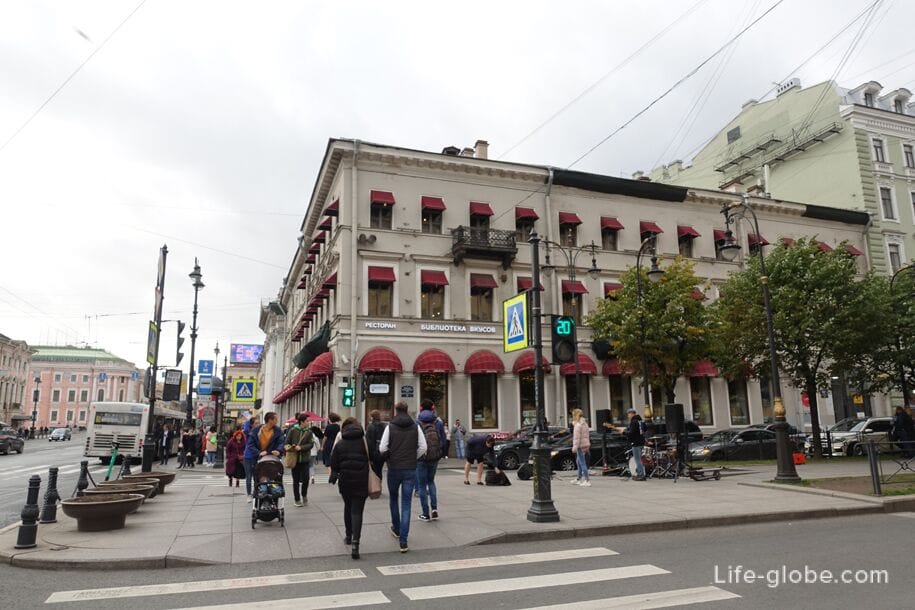
View of the building from Nevsky Prospekt
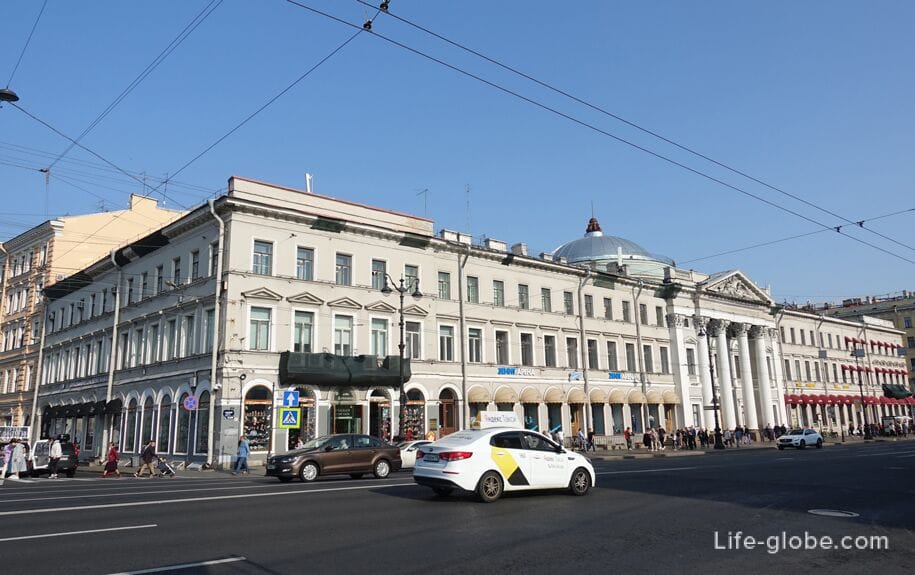
From the side of Nevsky Prospekt, the beautiful facade of the Mertens House "looks" at Bolshaya Konyushennaya Street.
The Mertens House is a historic building and architectural monument, which is one of the first neoclassical monuments in St. Petersburg.
The current building was built in 1911-1912 by order of F. L. Mertens as a trading house of the Mertens fur company.
Today, the building houses a restaurant and a Zara store. More about Mertens House…
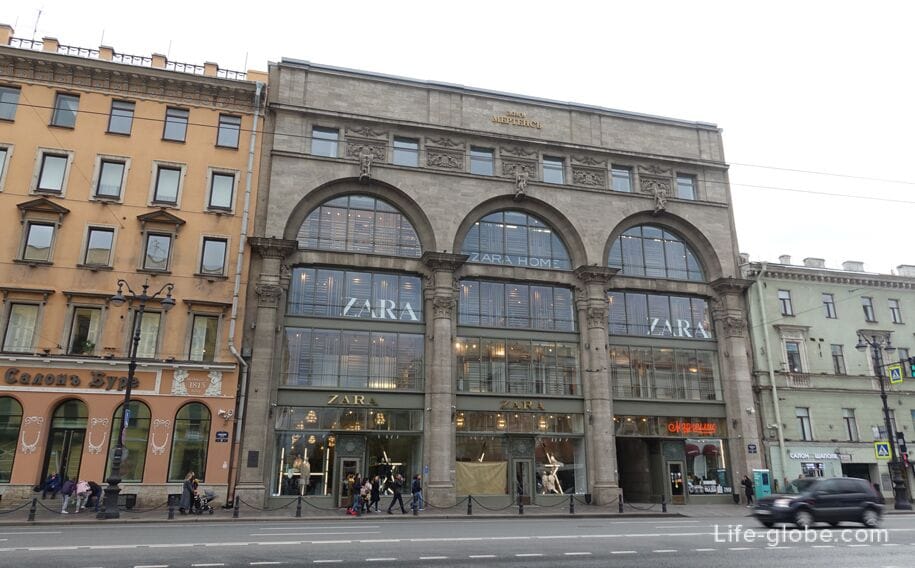
Nearest metro stations: "Admiralteiskaya", "Nevsky Prospekt" and "Gostiny Dvor".
On Bolshaya Konyushennaya Street you can stop
Villa Perlov Boutique Hotel offers free Wi-Fi and parking, meeting and conference facilities, concierge services and laundry facilities.
Each roomhere will provide you with a flat-screen TV with cable channels, a refrigerator, a minibar, a coffee machine/kettle and a safety deposit box. Each room has a private bathroom with bathrobes and free toiletries.
Some units also have a kitchen, equipped with a dishwasher and oven.
Breakfast is included in the room rate. Link to a boutique hotel

The 4-star Golden Triangle Boutique Hotel offers modern rooms with city views, a bar, free Wi-Fi and parking, a 24-hour front desk and free use of laptops.
The air-conditioned rooms and suites feature Italian furniture, a flat-screen TV and a minibar. The private bathroom comes with a hairdryer, slippers and free toiletries.
A buffet breakfast is included in the room rate. Link to a boutique hotel
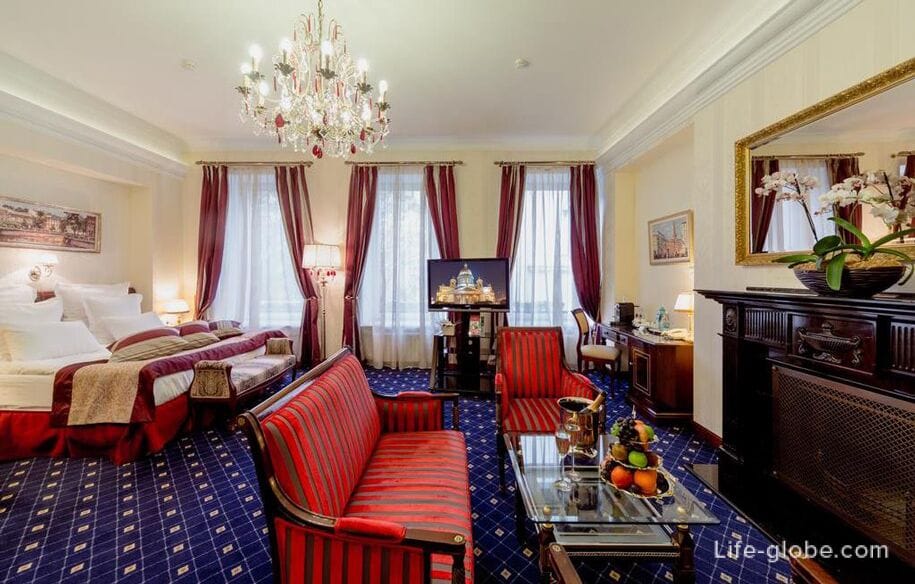
The 4-star Belvedere Nevsky Business Hotel offers a 24-hour front desk, free Wi-Fi and parking.
The hotel's windows overlook a Large Stable Street and a well-kept back yard.
Each roomhere will provide you with a flat-screen TV, a minibar, a safety deposit box and a private bathroom with a shower or bath, a hairdryer and free toiletries.
Breakfast is included in the room rate. Link to the hotel
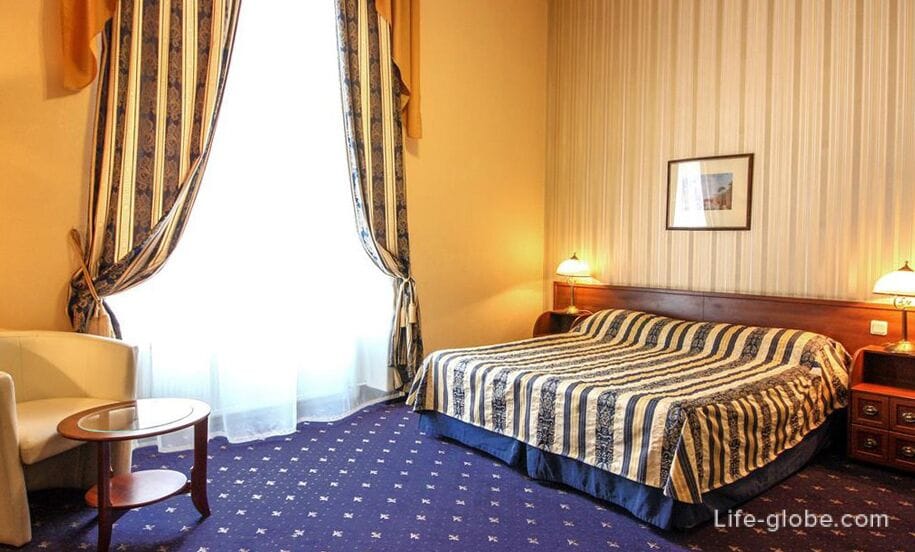
The 3-star Nevsky Grand Energy Hotel offers free Wi-Fi, a rooftop terrace with city views and a 24-hour front desk.
On the floors there are coolers with hot and cold water.
Each roomhere will provide you with a flat-screen TV, a safety deposit box, air conditioning and a private bathroom with a shower, a hairdryer and free toiletries.
A buffet breakfast can be included in the room rate. Link to the hotel
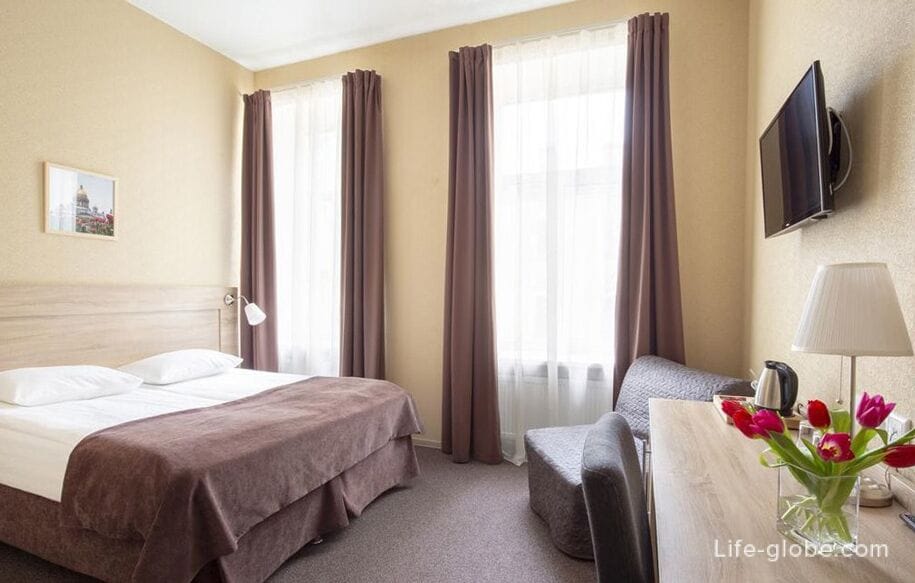
Noble Apartments offers free Wi-Fi and an elevator.
In the apartment: parquet floors, a seating area with a flat-screen TV, a fully equipped kitchen with a dining area and a private bathroom. Link to the apartment
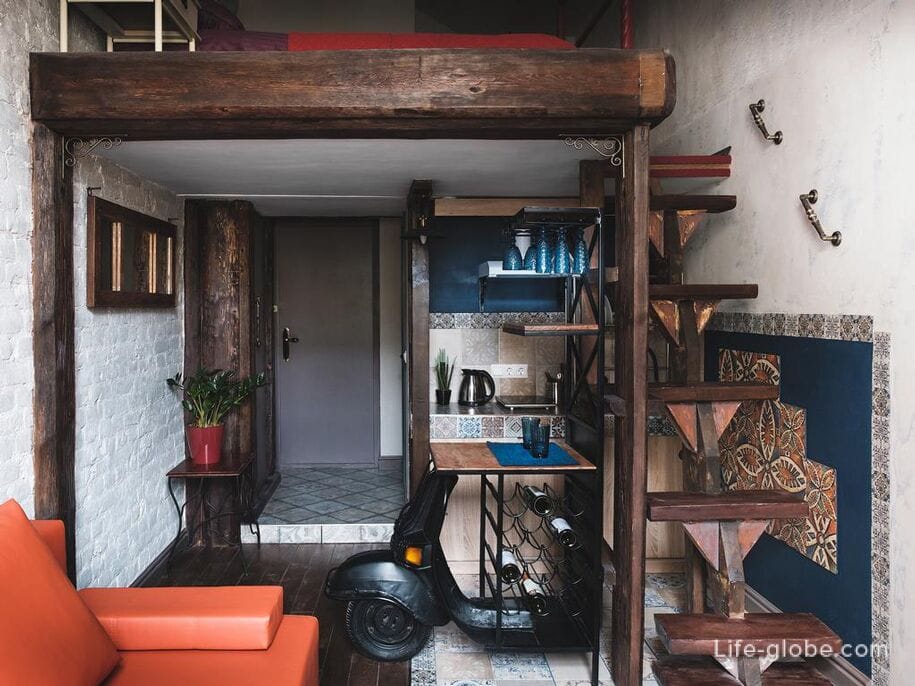
Apartments Longo on Bolshaya Konyushennaya with free private parking and Wi-Fi, food and beverage delivery service.
In the apartment: TV, free toiletries, bathrobe and slippers, washing machine, work desk, refrigerator, coffee/tea maker, microwave, stove, kitchen and ironing facilities, hair dryer, dressing room. Link to the apartment

All accommodation facilities in St. Petersburg, including in the city center and on Bolshaya Konyushennaya Street, can be viewed and booked here